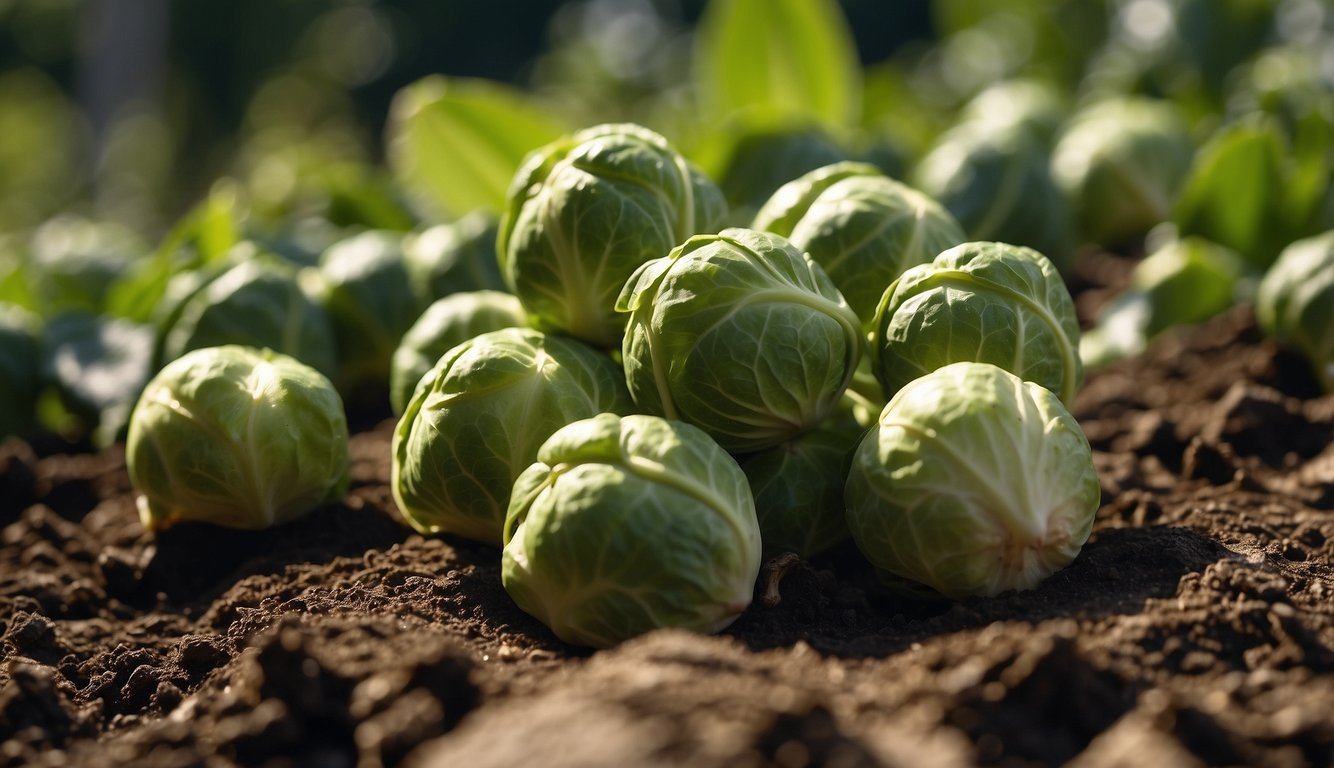TheHerbProf.com is a treasure trove of knowledge for those interested in natural healing and herbal remedies. The website is run by Paul Johnston MD. A naturopathic who has not only received extensive education in the field but also has personal experience in self-healing.
Where do brussels sprouts grow best? Brussel sprouts are a delicious and nutritious vegetable that are a popular choice for home gardeners. If you’re planning on growing brussel sprouts, you may be wondering where they grow best. As an experienced gardener, I can tell you that brussel sprouts thrive in cool, moist climates with well-draining soil.
When it comes to soil, brussel sprouts prefer a pH range of 6.0 to 7.5. They also require soil that is rich in organic matter, so be sure to amend your soil with compost or well-rotted manure before planting. Brussel sprouts also require consistent moisture, so be sure to water them regularly, especially during dry spells.
In terms of temperature, brussel sprouts prefer cool weather and can tolerate frost. They typically take between 80 and 100 days to mature, so plan your planting accordingly. If you live in a warmer climate, you may want to consider planting brussel sprouts in the fall or winter to take advantage of cooler temperatures. With the right growing conditions, you can enjoy a bountiful harvest of delicious brussel sprouts.
Optimal Growing Conditions
Growing Brussels sprouts requires specific optimal growing conditions for the best results. Here are some factors to consider when planting and growing this cool-season crop.
Climate and Temperature
Brussels sprouts are a cool-weather crop that thrives in temperatures ranging from 45 to 75 degrees Fahrenheit. They can tolerate light frost and even become sweeter as the temperature drops. However, they do not do well in hot weather, and high temperatures can cause them to bolt. It’s important to plant them in the right hardiness zone for your area, preferably in the fall for a late-fall or early-winter harvest.
Soil Requirements
Brussels sprouts require well-drained, fertile soil with plenty of organic matter, such as compost, to provide nitrogen and other essential nutrients. The soil should have a pH of 6.0 to 7.5. Before planting, amend the soil with compost and other organic matter to improve soil structure and fertility.
Sunlight and Watering
Brussels sprouts require full sun, which means they need at least six hours of direct sunlight daily. They also require consistent moisture, so it’s important to keep the soil moist but not waterlogged. Water them deeply once a week, or more often during dry spells, and mulch around the plants to help retain moisture.
By following these optimal growing conditions, you can ensure a successful harvest of delicious Brussels sprouts.
Planting and Cultivation
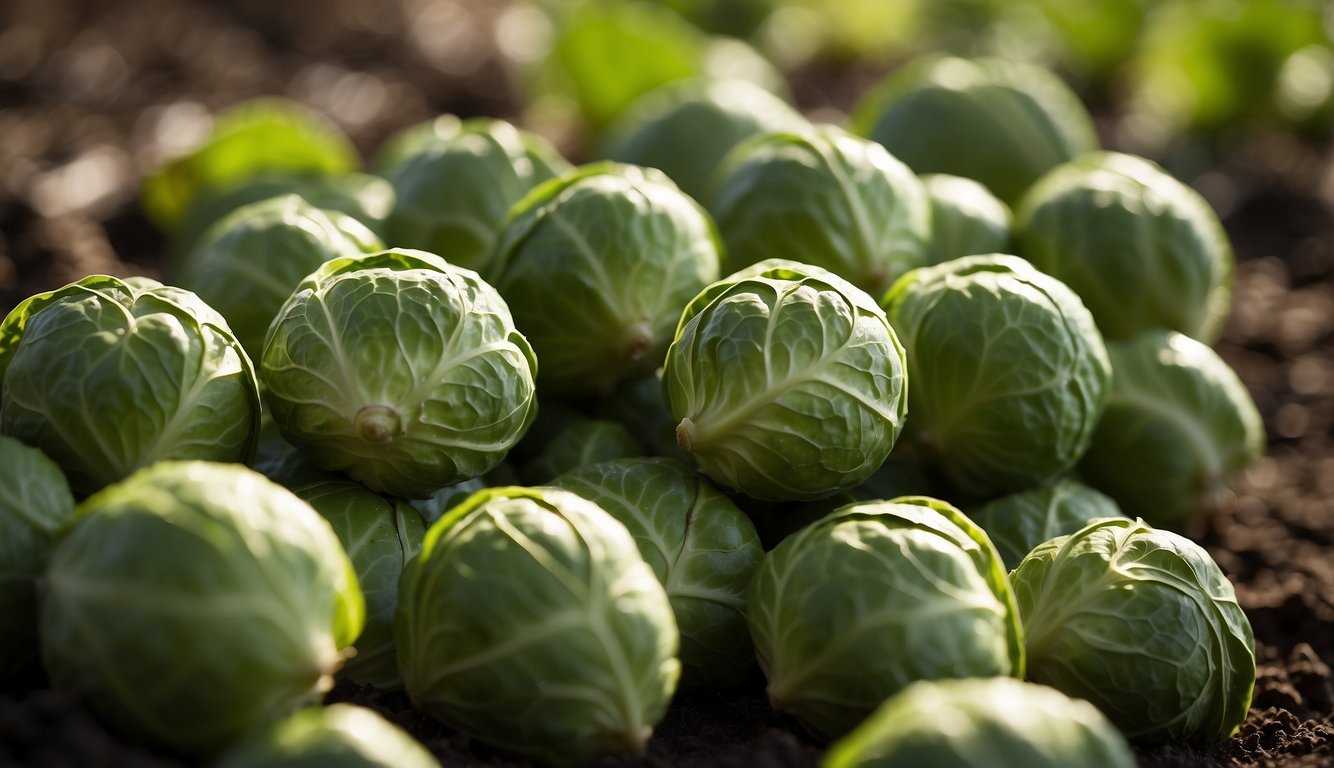
Brussels sprouts are a cool-season crop that grows best in a garden with fertile, well-drained soil and a pH between 6.0 and 7.5. They can be planted in early spring, late spring, or early summer, depending on the climate and the desired harvest time.
Seeding and Germination
Brussels sprouts can be grown from seeds. Sow seeds indoors 6 to 8 weeks before the last frost date in your area. Keep the soil moist and warm, and provide plenty of light. Seeds should germinate within 7 to 10 days.
Transplanting and Spacing
Transplant seedlings outdoors when they are about 3 inches tall and have at least one set of true leaves. Space plants 2 to 3 feet apart in rows that are 2 to 3 feet apart. This spacing allows enough room for the plants to grow and develop properly.
Maintenance and Care
Brussels sprouts require regular maintenance and care to grow healthy and productive. Keep the soil moist but not waterlogged, and weed the garden regularly to prevent competition for nutrients. Fungal diseases can be a problem, so avoid overhead watering and keep the leaves dry. Prune the lower leaves as the plants grow taller to improve air circulation and reduce the risk of disease. Watch out for pests such as aphids, cabbage loopers, and cabbage worms, and treat them promptly if necessary.
To grow healthy and productive Brussels sprouts, start by planting seeds indoors in early spring, transplant the seedlings outdoors when they are about 3 inches tall, and space the plants 2 to 3 feet apart in rows that are 2 to 3 feet apart. Provide regular maintenance and care, including watering, weeding, pruning, and pest control, to ensure a bountiful harvest.
Harvesting and Post-Harvest – Where Do Brussels Sprouts Grow Best?
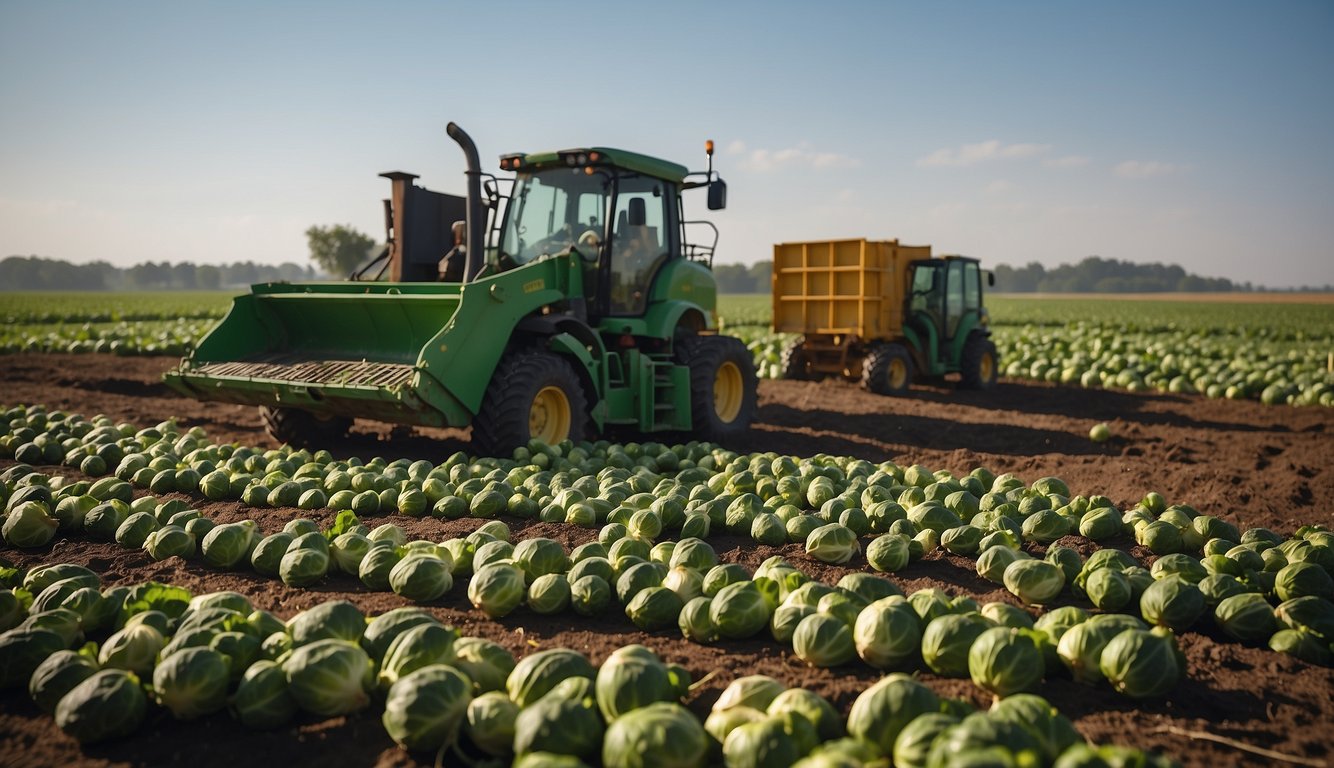
As a crop, Brussels sprouts are relatively easy to harvest and store. Proper harvesting techniques can ensure that the sprouts are at their peak flavor and nutrition. In this section, I will discuss the best time to harvest, storing and preservation, and preparing for consumption.
Best Time to Harvest
Brussels sprouts are ready to harvest when they reach about 1 – 1.5″ in diameter and are still firm. This usually occurs sometime between 85-110 days after planting. The lower sprouts will mature first, with upper sprouts maturing a day to a few days later. It is best to pick the sprouts when they are still tightly closed and have a bright green color.
The fall harvest is usually the best time to harvest Brussels sprouts. The cool weather during the fall months enhances the flavor of the sprouts and makes them sweeter.
Storing and Preservation – Where Do Brussels Sprouts Grow Best?
After harvesting, remove any yellowing or damaged leaves. The sprouts can be stored in the refrigerator for up to a week. For longer storage, the entire stalk, roots and all, can be pulled up after a moderate frost, and the stalk can be hung upside down in a cool, dry basement or garage or barn. Store stalks (no roots) for about 1 month in a root cellar or basement.
Preparing for Consumption
Brussels sprouts can be eaten raw, roasted, boiled, or steamed. They are a great addition to any meal and are packed with nutrients and vitamins. To prepare Brussels sprouts, rinse them under cold water and trim the stem end. Cut an X in the stem end to help the sprouts cook more evenly.
Harvesting and storing Brussels sprouts is a straightforward process. By following the tips outlined in this section, you can ensure that your Brussels sprouts are at their peak flavor and nutrition.
Pests and Diseases Management – Where Do Brussels Sprouts Grow Best?
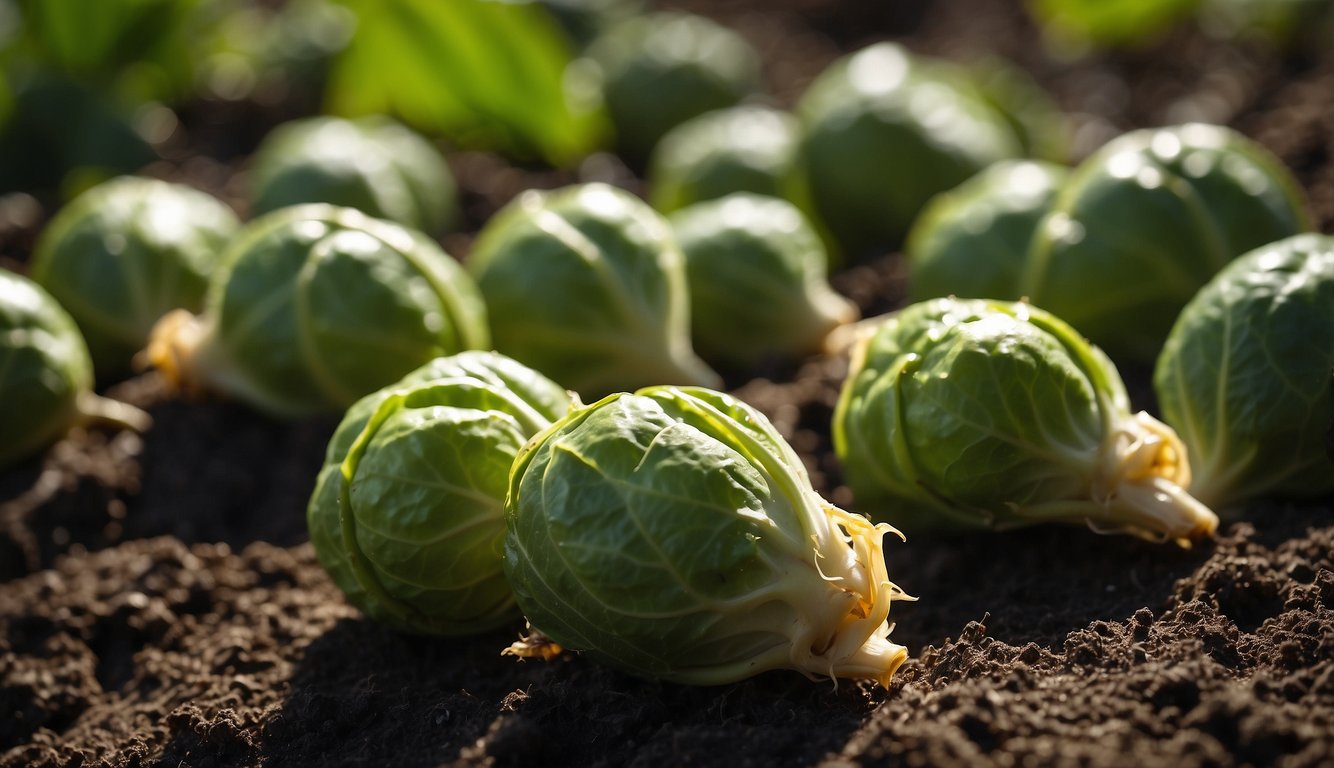
As with any plant, Brussels sprouts are susceptible to pests and diseases that can damage or even kill the plant. However, with proper management, you can minimize the risk of infestation and keep your Brussels sprouts healthy.
One of the most common pests that affect Brussels sprouts is aphids. These small insects feed on the sap of the plant and can cause stunted growth and yellowing of the leaves. To prevent aphids, it is important to keep the area around your plants clean and free of debris. You can also use insecticidal soap or neem oil to control the infestation.
What Can Affect Brussels?
Another common pest that can affect Brussels sprouts is the cabbage looper. These caterpillars can cause significant damage to the leaves of the plant, making it difficult for the plant to produce healthy sprouts. To prevent cabbage loopers, you can use Bacillus thuringiensis (Bt), which is a natural insecticide that is safe for humans and pets.
Clubroot is a disease that affects the cabbage family, including Brussels sprouts. It is caused by a soil-borne fungus that infects the roots of the plant, causing them to become swollen and deformed. To prevent clubroot, it is important to rotate your crops and avoid planting Brussels sprouts in the same area for at least three years.
Bacterial leaf spot is another common disease that affects Brussels sprouts. It is caused by a bacterium that can cause black or purple spots on the leaves of the plant. To prevent bacterial leaf spot, it is important to keep the area around your plants clean and free of debris. You can also use copper fungicides to control the infestation.
Pests and diseases can be a challenge when growing Brussels sprouts, but with proper management, you can minimize the risk of infestation and keep your plants healthy. By keeping the area around your plants clean, using natural insecticides, and rotating your crops, you can ensure that your Brussels sprouts grow strong and produce healthy sprouts.
Varieties and Selection – Where Do Brussels Sprouts Grow Best?
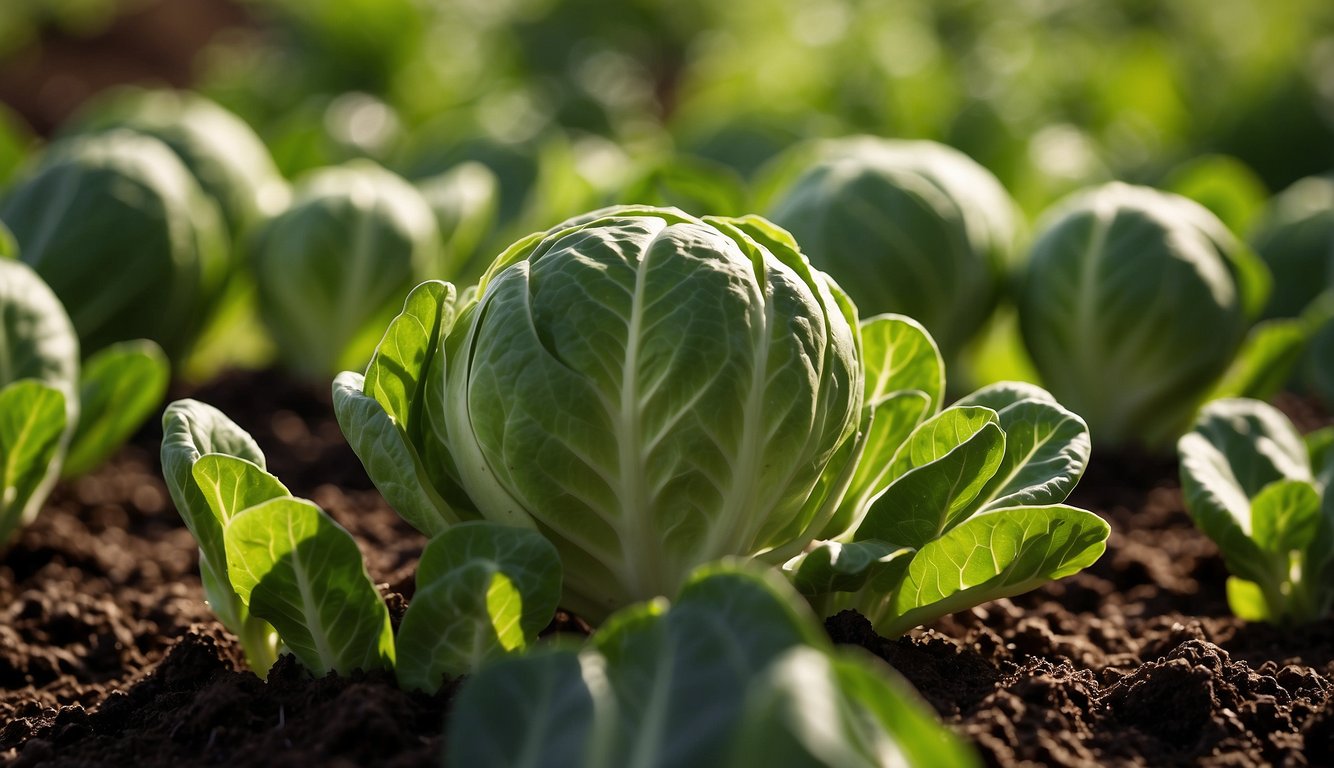
When it comes to growing brussels sprouts, selecting the right variety is important. Brussels sprouts are a member of the Brassica family, which also includes broccoli, kale, kohlrabi, and cabbage. There are many varieties of brussels sprouts available, each with its own unique flavor and growing requirements.
Some of the most popular brussels sprouts varieties include Long Island Improved, Jade Cross, and Churchill. Long Island Improved is a classic variety that produces large, flavorful sprouts. Jade Cross is a hybrid variety that is known for its uniformity and high yields. Churchill is another hybrid variety that grows quickly and produces early, making it a good choice for areas with a short growing season.
When selecting a brussels sprouts variety, it’s important to consider your climate and growing conditions. Some varieties are more tolerant of cold weather, while others prefer warmer temperatures. Additionally, some varieties are more resistant to pests and diseases than others.
Once you’ve selected a variety, it’s important to choose healthy, disease-free seedlings. Look for seedlings with strong stems and healthy leaves. Avoid seedlings with yellowing leaves or signs of insect damage.
When planting your brussels sprouts, make sure to give them plenty of space to grow. Brussels sprouts prefer full sun and well-draining soil. They also require regular watering and fertilization to thrive.
By selecting the right variety and providing the proper growing conditions, you can enjoy a bountiful harvest of delicious, nutritious brussels sprouts.
Companion Planting and Crop Rotation – Where Do Brussels Sprouts Grow Best?
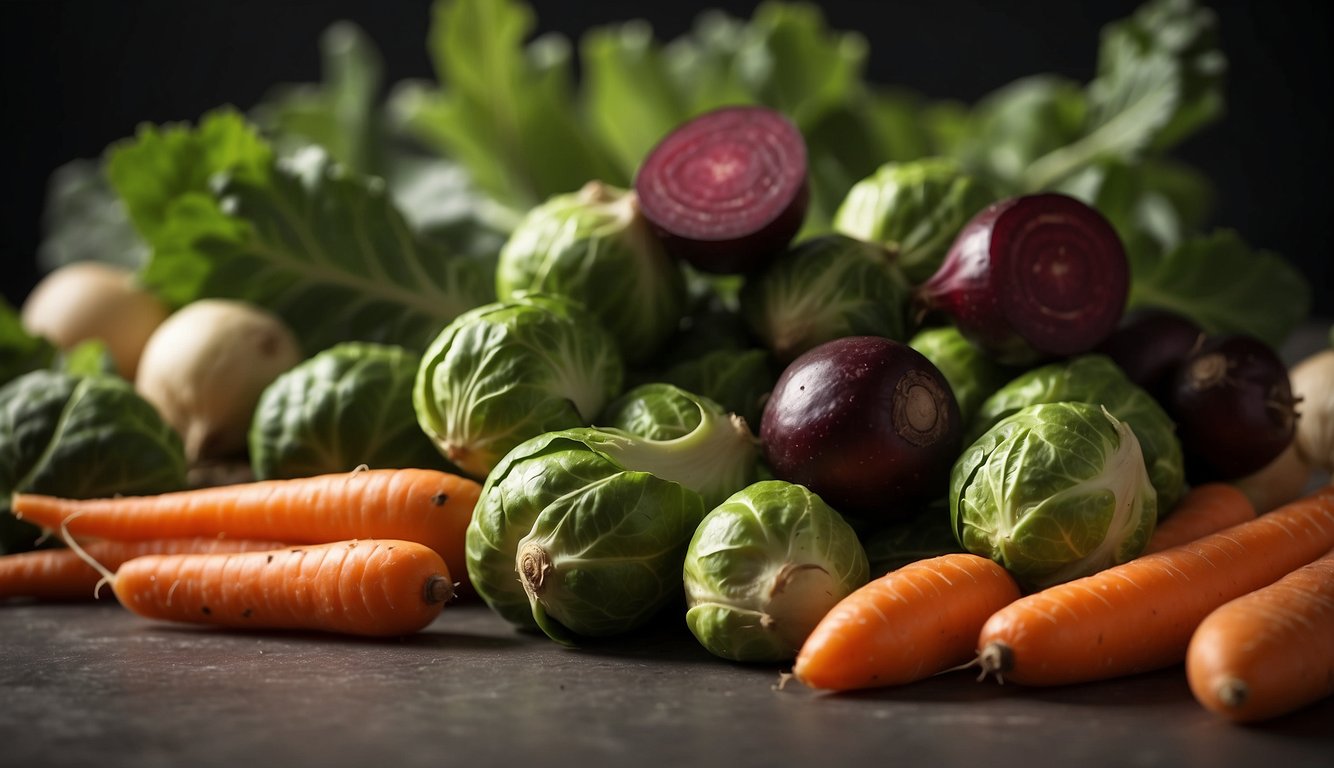
I have found that companion planting and crop rotation are important factors in determining where Brussels sprouts grow best. Companion planting involves planting different plants together that have a beneficial relationship, while crop rotation involves changing the location of crops from season to season to prevent soil-borne diseases and pests.
When it comes to companion planting for Brussels sprouts, I have found that planting carrots, onions, peas, and lettuce nearby can be beneficial. Carrots and onions can help repel pests such as carrot flies and onion maggots, while peas and lettuce can help fix nitrogen in the soil, which can benefit the growth of Brussels sprouts.
However, it is important to avoid planting Brussels sprouts near potatoes, as they are in the same family and can attract the same pests and diseases.
In addition to companion planting, crop rotation can also be important for the growth of Brussels sprouts. I have found that it is best to rotate crops every three to four years to prevent soil-borne diseases and pests from building up in the soil. When rotating crops, it is important to avoid planting Brussels sprouts in the same location for at least three years to prevent the buildup of pests and diseases.
Overall, by using companion planting and crop rotation techniques, I have found that Brussels sprouts can grow best in a healthy and pest-free environment.
Cultural Significance and History – Where Do Brussels Sprouts Grow Best?
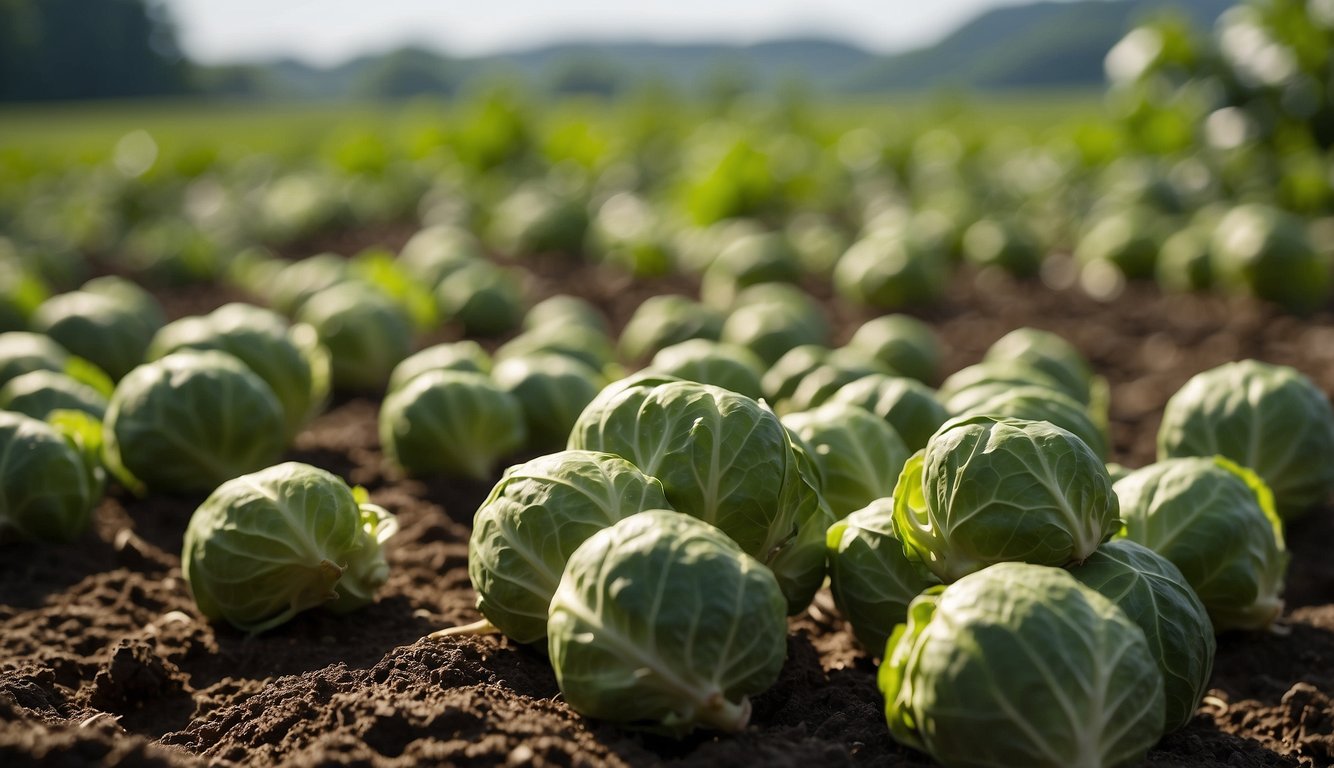
As a member of the cabbage family, Brussels sprouts (Brassica oleracea) are a popular food crop worldwide. However, their origin can be traced back to Belgium, where they have been cultivated since the 16th century. In fact, the name “Brussels sprouts” comes from the city of Brussels, which is known for its love of the vegetable.
Belgium has a long history of cultivating cabbage, and the country’s climate and soil make it an ideal place for growing Brussels sprouts. Today, Belgium remains one of the largest producers of Brussels sprouts in the world, along with the United Kingdom and the Netherlands.
The popularity of Brussels sprouts has grown over the years, and they are now a common ingredient in many dishes worldwide. They are often roasted, grilled, or sautéed, and can be served as a side dish or incorporated into salads, soups, and stews.
In addition to their culinary uses, Brussels sprouts have also been used for medicinal purposes throughout history. They are known for their high vitamin C content, and have been used to treat scurvy, a disease caused by vitamin C deficiency.
Overall, Brussels sprouts have a rich cultural significance and history, and continue to be a beloved food crop around the world.
Growing in Different Environments – Where Do Brussels Sprouts Grow Best?
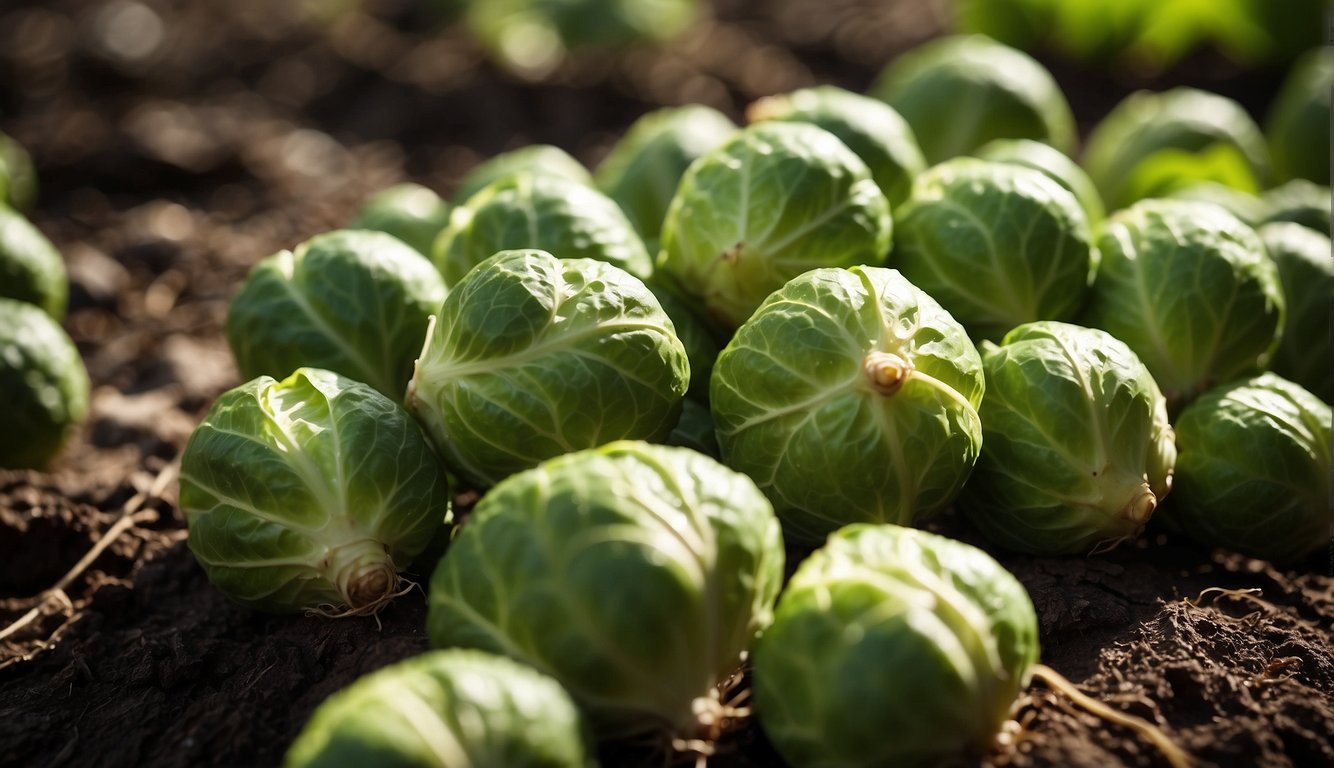
When it comes to growing Brussels sprouts, different environments can have a significant impact on their growth and yield. In this section, I will discuss how Brussels sprouts grow in different environments, including home gardens, greenhouses, and urban and small spaces.
Home Gardens – Where Do Brussels Sprouts Grow Best?
Brussels sprouts are a cool-weather crop that prefers long growing seasons and fertile soil. They grow best in USDA hardiness zones 2 to 9, which includes most of the United States. If you are growing Brussels sprouts in your home garden, it is important to plant them in a location that receives full sun and has well-draining soil.
It is recommended to plant Brussels sprouts in the early spring or late summer to ensure they have a long growing season. When planting, space the seedlings 18 to 24 inches apart and ensure they are planted at the same level as in their container. Consistent moisture is key for growing Brussels sprouts, so ensure the soil is moist but not waterlogged.
Greenhouses and Controlled Conditions
Growing Brussels sprouts in greenhouses or controlled conditions can provide ideal growing conditions for the plant. In these environments, the temperature, humidity, and light can be controlled to optimize growth.
When growing Brussels sprouts in greenhouses or controlled conditions, it is important to ensure the soil is well-draining and has a pH between 6 and 6.8. Brussels sprouts prefer a slightly acidic soil. Additionally, it is important to provide adequate ventilation to prevent disease and ensure the plants have enough carbon dioxide.
Urban and Small Spaces
For those living in urban or small spaces, growing Brussels sprouts can be a challenge. However, it is still possible to grow Brussels sprouts in containers or small gardens.
When growing Brussels sprouts in containers, it is important to choose a container that is at least 18 inches in diameter and has drainage holes. Fill the container with a well-draining soil mix and ensure the plants receive at least six hours of sunlight per day. Regular watering is key for growing Brussels sprouts in containers, as they can dry out quickly.
Overall, Brussels sprouts can grow in a variety of environments, as long as they receive adequate sunlight, moisture, and well-draining soil. By following the tips outlined above, you can successfully grow Brussels sprouts in your home garden, greenhouse, or even in small spaces.
Where Do Brussels Sprouts Grow Best? Let’s Explore with TheHerbProf.com
Today, we’re digging into the world of Brussels Sprouts. Ever wondered, “Where do Brussels Sprouts grow best?” Let’s find out together!
First up, Climate. Brussels Sprouts love the cool weather! They thrive in temperatures between 45-75°F. And guess what? TheHerbProf.com has a detailed guide on climate requirements for various plants. It’s like having a personal weather consultant!
Next, the Soil. Brussels Sprouts prefer well-drained, fertile soil with a pH between 6.0 and 7.5. And TheHerbProf.com? It’s got all the info you need to prepare your soil effectively. It’s a gardener’s dream!
Then there’s the Sunlight. Brussels Sprouts need at least 6 hours of sunlight each day. But with TheHerbProf.com, you’ve got a guide to understanding sunlight requirements. It’s like a DIY project for your garden!
In short, Brussels Sprouts’ growing conditions and TheHerbProf.com are a match made in garden heaven. They offer a blend of practical gardening advice and fascinating plant facts. So, whether you’re a Brussels Sprouts enthusiast or a curious visitor, there’s always something new to learn!
Remember, folks, the right conditions make all the difference. Keep exploring TheHerbProf.com for more green adventures!
References – Where Do Brussels Sprouts Grow Best?
Little Herb Encyclopedia, by Jack Ritchason; N.D., Woodland Publishing Incorporated, 1995
The Ultimate Healing System, Course Manual, Copyright 1985, Don Lepore
Planetary Herbology, Michael Tierra, C.A., N.D., Lotus Press, 1988
Handbook of Medicinal Herbs, by James A. Duke, Pub. CRP Second Edition 2007
The Complete Medicinal Herbal, by Penelope Ody, Published by Dorling Kindersley
Check the Following Articles!
Can Broccoli Grow in Shade? Exploring the Possibilities
Bay Laurel Tree Care: Tips and Tricks for a Healthy Tree
Can You Eat Beautyberry? A Comprehensive Guide
Rampp-Team.com Is Now Part Of TheHerbProf.com
Frequently Asked Questions – Where Do Brussels Sprouts Grow Best?
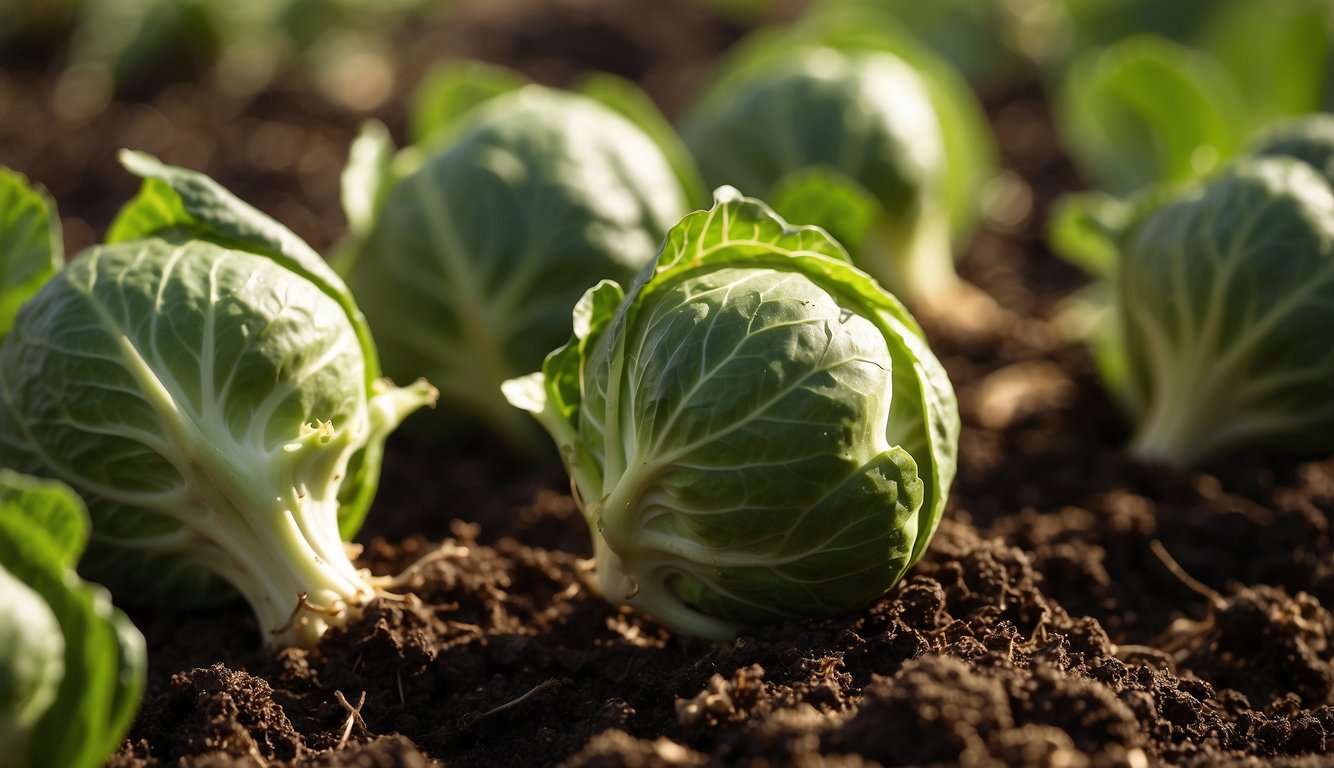
What are the ideal climate conditions for growing Brussel sprouts?
Brussel sprouts grow best in cool weather conditions, with temperatures ranging between 60°F to 65°F (15°C to 18°C). They need at least 6 hours of sunlight per day and well-draining soil that is rich in organic matter. Brussel sprouts can tolerate frost and light freezes, which can actually improve their flavor.
How can I successfully grow Brussel sprouts in containers?
Brussel sprouts can be grown in containers, but it’s important to choose a container that is at least 18 inches deep and 24 inches wide. Use a well-draining potting mix and make sure the container has drainage holes. Keep the soil consistently moist, but not waterlogged. Fertilize regularly with a balanced fertilizer.
What are the common challenges when cultivating Brussel sprouts?
One of the most common challenges when growing Brussel sprouts is pests, particularly aphids and cabbage worms. To control these pests, use insecticidal soap or neem oil. Another challenge is disease, such as clubroot and black rot. To prevent these diseases, practice crop rotation and avoid planting in soil where other brassicas have been grown.
What are the key growth stages of Brussel sprouts?
The key growth stages of Brussel sprouts are germination, seedling, vegetative, and reproductive stages. Germination and seedling stages begin when the seed is planted in the soil, while the vegetative stage involves the growth of leaves and stems. The reproductive stage is when the sprouts start to form along the stem.
What companion plants should be avoided when planting Brussel sprouts?
Brussel sprouts should not be planted near other brassicas, such as broccoli, cauliflower, and cabbage, as they are susceptible to the same pests and diseases. Avoid planting near tomatoes, peppers, and eggplants, as they can attract the same pests that attack Brussel sprouts.
What are the best practices for a bountiful Brussel sprout harvest?
To ensure a bountiful harvest, start by planting in well-draining soil that is rich in organic matter. Water regularly and fertilize with a balanced fertilizer. Pinch off the top of the plant when it reaches the desired height to encourage lateral growth and sprout development. Harvest the sprouts when they are firm and about 1 inch in diameter.
